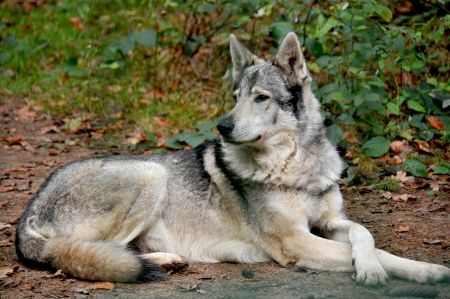Are wolves really to be understood as enemies of man?
- Written by Portal Editor
As initially almost uninvolved, we have just recently had a heated discussion in a small discussion group about the sense or nonsense of reintroducing wolves into native German forests.
Some see it clearly as an enrichment of the environment and nature and therefore as quite sensible, others try to explain themselves as a justification by describing the high risk potential for children and small animals during a walk.
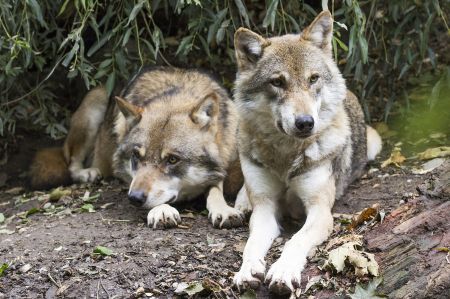 According to the Ministry of Health, there were two attacks by wolves on humans between 1999 and 2010 in Turkey, which is much larger in terms of area but has an almost identical population. In one case, a rabies infection in the wolf could be proven, which was probably the primary reason for the attack on humans. In the other case, two of the three bitten people died of rabies, but it could not be proven that the rabid animal was really a wolf.
According to the Ministry of Health, there were two attacks by wolves on humans between 1999 and 2010 in Turkey, which is much larger in terms of area but has an almost identical population. In one case, a rabies infection in the wolf could be proven, which was probably the primary reason for the attack on humans. In the other case, two of the three bitten people died of rabies, but it could not be proven that the rabid animal was really a wolf.
The shooting down of one of the really rare Anatolian panthers, which is said to have injured a shepherd, has just been reported in the press. The shepherd's colleagues then shot the panther and were fined. Is that bearable, even if the risk potential for the population is so low?
Shoes made of wolfskin are said to help boys grow into brave men
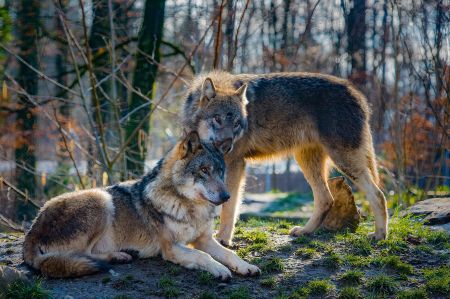 But back to the wolf. Many old tribes of northern Europe, who lived mainly from hunting game, saw the wolf as an equal or sometimes even superior competitor whose endurance and skill was admired. In other cultures, the wolf was even considered a protector or a supernatural being and was worshiped accordingly. In North America, Native American warriors even identified with the wolf (therianthropy). Even modern first names such as Wolf, Wolfgang or Wolfhard are still reminiscent of the former appreciation of the animal. Various parts of the wolf's body were even considered healing or helpful in medicine in Germany. Shoes made of wolfskin were supposed to help boys grow into brave men. In the Bible, on the other hand, the wolf is predominantly portrayed as a dangerous animal, indeed as a herd-tearing animal, for example in (Gen 49.27 LUT); (Jeremiah 5:6 NIV); (Joh 10,12 LUT) which you have to put an end to as soon as possible.
But back to the wolf. Many old tribes of northern Europe, who lived mainly from hunting game, saw the wolf as an equal or sometimes even superior competitor whose endurance and skill was admired. In other cultures, the wolf was even considered a protector or a supernatural being and was worshiped accordingly. In North America, Native American warriors even identified with the wolf (therianthropy). Even modern first names such as Wolf, Wolfgang or Wolfhard are still reminiscent of the former appreciation of the animal. Various parts of the wolf's body were even considered healing or helpful in medicine in Germany. Shoes made of wolfskin were supposed to help boys grow into brave men. In the Bible, on the other hand, the wolf is predominantly portrayed as a dangerous animal, indeed as a herd-tearing animal, for example in (Gen 49.27 LUT); (Jeremiah 5:6 NIV); (Joh 10,12 LUT) which you have to put an end to as soon as possible.
The founders of the city of Rome, the twins Romulus and Remus, are said to have been suckled and raised by the so-called Capitoline wolf. There are comparable traditions from the Indian region; the Slovak warriors Waligor and Wyrwidub as well as the founder of the old Persian empire, Cyrus II, are said to have been raised by wolves. The modern motif of the wolf children also has its origins here. Associated with dark witchcraft and sorcery, the Greek goddess Hekate was often depicted in the visual arts in the company of three wolves. The Greek king Lycaon was turned into a wolf by Zeus.
Greek king Lycaon was turned into a wolf by Zeus
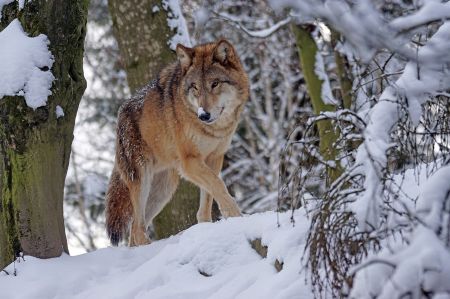 In the Germanic or Nordic mythology, the god of victory Odin is associated with two ravens and the wolves Geri and Freki, who follow the fight as belligerent and brave animals and pounce on the fallen fighters. The sun and moon are being hunted by the wolf brothers Skoll and Hati respectively. Both have another brother named Managarm, who feeds on the flesh of the dead. The Fenriswolf plays a decisive role in the end of the world Ragnarök. At the beginning of the Twilight of the Gods he devours the moon, and later Odin himself. The wolf Ysengrin of the myth has many characteristics of the devious fox. Also of Germanic origin is the figure of the werewolf, who, regardless of his life in bourgeois society, temporarily assumes the form of a wolf.
In the Germanic or Nordic mythology, the god of victory Odin is associated with two ravens and the wolves Geri and Freki, who follow the fight as belligerent and brave animals and pounce on the fallen fighters. The sun and moon are being hunted by the wolf brothers Skoll and Hati respectively. Both have another brother named Managarm, who feeds on the flesh of the dead. The Fenriswolf plays a decisive role in the end of the world Ragnarök. At the beginning of the Twilight of the Gods he devours the moon, and later Odin himself. The wolf Ysengrin of the myth has many characteristics of the devious fox. Also of Germanic origin is the figure of the werewolf, who, regardless of his life in bourgeois society, temporarily assumes the form of a wolf.
Hardly any other species of animal has so many perspectives on the wolf. What is the background, ultimately the deeper meaning, for the so seriously different perspectives?
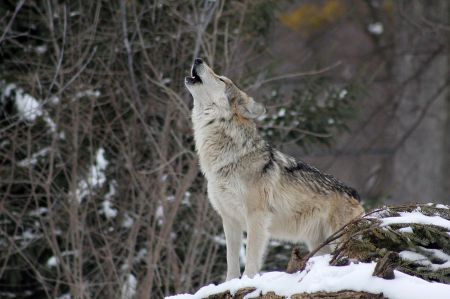 Since the wolf naturally also beats livestock, in the past it was often regarded as a real enemy of humans who disputed food. From the Middle Ages and into the early modern period, the relationship between humans and wolves in Europe was increasingly one-sidedly shaped by fear and demonization. Faith and religion also play a crucial role here. The proliferation of human settlements and agricultural areas, as well as open animal husbandry, especially the forest grazing of cattle, sheep, pigs and horses, which was widespread up to the 19th century, inevitably led to numerous domestic animal losses due to wolves. Even if the reported losses were in many cases excessively exaggerated or caused by poaching dogs, the losses in this type of livestock farming are likely to have been economically significant for the farmers. In addition to the direct competition for food between humans and wolves, the wolf was also condemned as a hunting competitor. Typical were statements like the complete universal encyclopedia from the year 1758. The encyclopedia claims the wolf is “very voracious, cruel, malicious, and the most dangerous enemy of wild and tame animals, especially sheep”, also “the most harmful creature God”, which “attacks, tears and devours people.”
Since the wolf naturally also beats livestock, in the past it was often regarded as a real enemy of humans who disputed food. From the Middle Ages and into the early modern period, the relationship between humans and wolves in Europe was increasingly one-sidedly shaped by fear and demonization. Faith and religion also play a crucial role here. The proliferation of human settlements and agricultural areas, as well as open animal husbandry, especially the forest grazing of cattle, sheep, pigs and horses, which was widespread up to the 19th century, inevitably led to numerous domestic animal losses due to wolves. Even if the reported losses were in many cases excessively exaggerated or caused by poaching dogs, the losses in this type of livestock farming are likely to have been economically significant for the farmers. In addition to the direct competition for food between humans and wolves, the wolf was also condemned as a hunting competitor. Typical were statements like the complete universal encyclopedia from the year 1758. The encyclopedia claims the wolf is “very voracious, cruel, malicious, and the most dangerous enemy of wild and tame animals, especially sheep”, also “the most harmful creature God”, which “attacks, tears and devours people.”
Numerous pet losses due to wolves
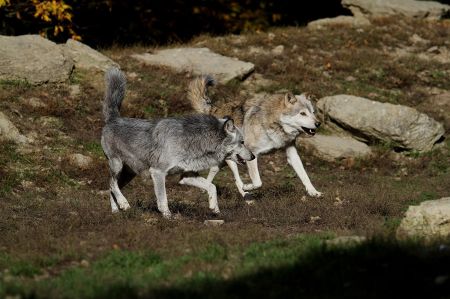 Reports and stories about "plagues of wolves" and attacks on people (sometimes resulting in death) can be found in numerous written sources up to modern times. As early as 1197, there were reports of a "plague of wolves" on the Moselle, which allegedly claimed several human lives. As late as 1849, ie at a time when wolves in Central Europe were already largely exterminated, a "plague of wolves" was reported from Kottenheim when a severe winter lasted until Easter.
Reports and stories about "plagues of wolves" and attacks on people (sometimes resulting in death) can be found in numerous written sources up to modern times. As early as 1197, there were reports of a "plague of wolves" on the Moselle, which allegedly claimed several human lives. As late as 1849, ie at a time when wolves in Central Europe were already largely exterminated, a "plague of wolves" was reported from Kottenheim when a severe winter lasted until Easter.
This attitude towards wolves led to a persecution in western and central Europe, the aim of which was the complete extermination of the wolf. The hunt for wolves in Western and Central Europe was mainly carried out by means of large battues. The well-known retreat areas were spanned with so-called wolves (ropes with rags hanging from them). The wolves did not slip under these rag-covered ropes, but remained in the cordoned-off area. The beaters then herded the wolves towards a line of riflemen, where they were then shot down. The hunting and forestry personnel, as well as the population who were obliged to perform compulsory hunts, were called up for the battues. These wolf drive hunts were hated by the population because they were carried out in winter when there was fresh snow. Only when there was fresh snow could you follow the tracks of the wolves and determine where they retreated. The hunts lasted many hours, even days. The population who were obliged to do compulsory hunting services were mostly poor day laborers and farmers. These drivers often had inadequate winter clothing, which repeatedly led to frostbite. At the beginning of the 18th century, between 10 and 25 hunts per year were scheduled in the Oranienburg region. Municipalities and cities tried again and again to free themselves from the position of drivers. The town of Neu-Ruppin paid several hundred Reichstaler in 1672 to get rid of the obligation.
Driven wolf hunts were hated by the population
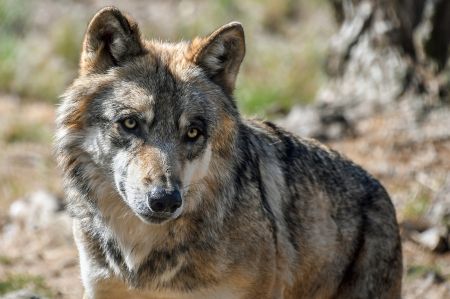 In addition to battue, there were other hunting methods. In order to increase the incentive of wolf hunting, there were high catch bonuses. According to a regulation in Prussia, one paid 12 thalers for an adult she-wolf, 10 thalers for an adult wolf, 8 thalers for a young wolf and 4 thalers for a dug up puppy. However, carrying firearms was forbidden for the general population. Among other things, baits poisoned with strychnine were used. Wolf gardens and wolf pits were also laid out. Another method was wolf rods forged from iron. The barbed ends were baited and hung from a tree high enough for the wolf to jump to catch. The wolf caught its mouth and died in a long agony.
In addition to battue, there were other hunting methods. In order to increase the incentive of wolf hunting, there were high catch bonuses. According to a regulation in Prussia, one paid 12 thalers for an adult she-wolf, 10 thalers for an adult wolf, 8 thalers for a young wolf and 4 thalers for a dug up puppy. However, carrying firearms was forbidden for the general population. Among other things, baits poisoned with strychnine were used. Wolf gardens and wolf pits were also laid out. Another method was wolf rods forged from iron. The barbed ends were baited and hung from a tree high enough for the wolf to jump to catch. The wolf caught its mouth and died in a long agony.
As early as the 18th century, only solitary wolves were found west of the Oder in the German Empire. The wolf population was only able to survive in East Prussia. In the winter of 1747/48, the hunting distance in East Prussia was still 241 wolves, while in the three western provinces together only 24 wolves were killed. As late as 1764, the Brandenburg provincial government demanded an increase in the shooting money because ten wolves had been found, which were then quickly shot without increasing the shooting money. The wolf was gradually eradicated in more and more areas.
Used bait poisoned with strychnine
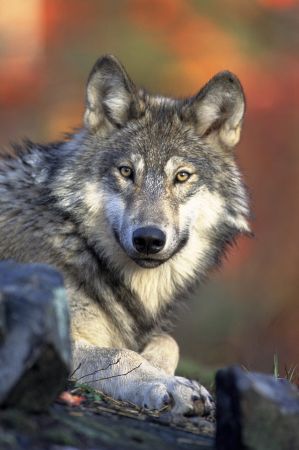 The wolf was exterminated in Great Britain (last hunted in 1743), Denmark (1772), Luxembourg (1893) and Germany (1904). Surprisingly, in southern and eastern Europe, wolves (and other large carnivores) were met with considerably more tolerance. Even if he was pursued more intensively regionally and temporally in the event of increased damage to domestic wolves, complete eradication was never the goal there.
The wolf was exterminated in Great Britain (last hunted in 1743), Denmark (1772), Luxembourg (1893) and Germany (1904). Surprisingly, in southern and eastern Europe, wolves (and other large carnivores) were met with considerably more tolerance. Even if he was pursued more intensively regionally and temporally in the event of increased damage to domestic wolves, complete eradication was never the goal there.
We will continue to follow the topic of wolves, as diverse and controversial as we have experienced the discussions. A never-ending topic that will hopefully lead to more knowledge and understanding of wolves.
The controversial discussion about the wolf population in Germany has just started again. Outraged politicians are campaigning for the shooting down of so-called "dangerous people". Actually, a problem that could not be solved very factually and easily? For example, as in the past, through the use of herding dogs? It also works in many other countries without any problems. So, the dog would make sense again as a loyal friend and companion of man and would not have to be pushed and / or even carried in a pram / handcart over trade fairs or walks, since he can no longer walk because of sheer immobility and fattening. Poor dog and poor master! Right now, the topic of wolves is again being given high political priority, so the reason for this is obvious: there is probably no better distraction from the real problems! Short-sighted and stupid!
Please read as well:
Wadden area hike to bird protection island on Minsener Oldeoog
